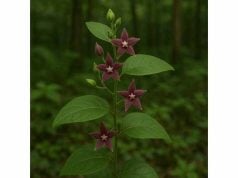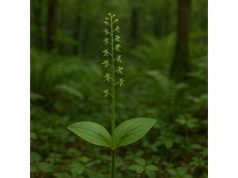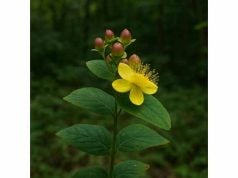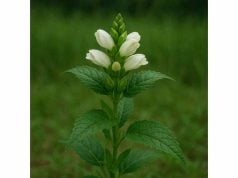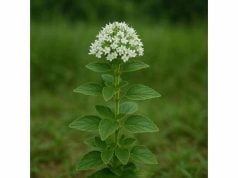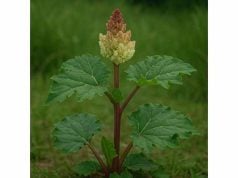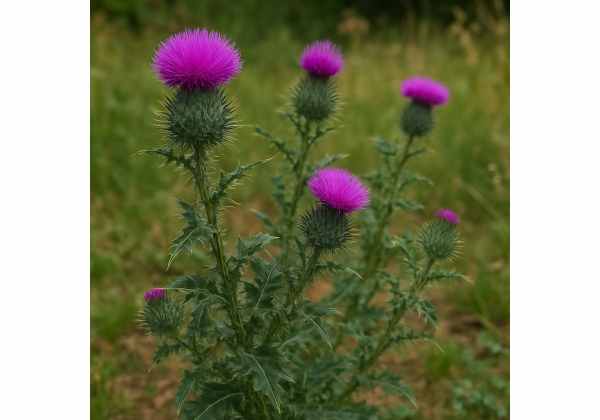
Teasel, a wild and distinctive herb known for its spiny appearance and historical significance in traditional medicine, has been used for centuries to treat a variety of ailments. Rich in bioactive compounds such as iridoid glycosides, flavonoids, saponins, and phenolic acids, teasel offers promising antioxidant, anti-inflammatory, and analgesic benefits. Traditionally employed to support joint health, improve circulation, and promote tissue repair, this herb has also found its way into modern nutraceutical and cosmetic formulations. Today, teasel is valued both for its unique botanical character and its potential to contribute to holistic health and well-being, bridging ancient herbal wisdom with contemporary scientific research.
Table of Contents
- Botanical Overview and Identification
- Phytochemical Profile and Active Compounds
- Health Benefits and Essential Properties
- Practical Applications and Safety Guidelines
- Research Insights and Key Findings
- Frequently Asked Questions
Botanical Overview and Identification
Teasel refers to several species within the genus Dipsacus, with Dipsacus fullonum being among the most well-known. This herbaceous biennial plant is native to Eurasia, particularly thriving in temperate climates, and has been widely naturalized in North America. Characteristically, teasel forms a basal rosette of oblong, toothed leaves during its first year. In the second year, it produces a tall, erect flowering stem that can reach heights of up to 1.5–2 meters. The stem is covered with distinctive spines, and its conical flower heads, composed of numerous small, white to pale pink flowers, are arranged in a pyramid-like cluster.
The spiny structure of teasel serves as a natural defense mechanism, deterring herbivores and protecting the plant’s reproductive parts. This unique morphology has not only contributed to its ornamental appeal but also to its traditional use as a tool in textile processing, where the dried heads were once employed to raise the nap on woolen cloth. Teasel’s adaptive features extend to its habitat preferences: it thrives in disturbed soils, roadside ditches, and open meadows, where it can often be seen colonizing gaps left by clearing and natural disturbances.
From a taxonomic standpoint, teasel is classified in the Dipsacaceae family (though some taxonomists now place it in the Caprifoliaceae family), reflecting its evolutionary relationships with other herbaceous plants that exhibit similar floral structures. Its ability to flourish in both nutrient-poor and moderately fertile soils demonstrates a robust adaptability. The environmental conditions that favor teasel include full sun exposure, well-drained soils, and a climate with moderate rainfall. As a biennial plant, its life cycle is split between a vegetative first year, where it gathers nutrients and energy, followed by a reproductive second year marked by dramatic flowering and seed dispersal.
Culturally, teasel has been valued not only for its utility in the textile industry but also for its medicinal applications in traditional herbal remedies. Historical records indicate that teasel was used to treat a range of ailments, including joint pain, digestive issues, and infections. Indigenous knowledge systems passed down its uses orally, and its therapeutic value has been documented in herbals dating back centuries. Today, while modern medicine has largely supplanted its traditional uses, teasel remains a subject of interest in phytotherapy and integrative medicine research.
Modern cultivation practices have also contributed to the renewed interest in teasel. Gardeners appreciate its striking appearance and low maintenance needs, making it a popular choice for naturalized landscapes and wildflower gardens. Researchers are currently studying its genetic diversity and ecological roles, aiming to preserve its wild heritage while exploring its potential in sustainable agriculture and novel herbal formulations.
In essence, the botanical profile of teasel is one of resilience, adaptability, and historical significance. With its distinctive spiny flower heads, versatile growth habits, and traditional applications ranging from textile processing to herbal remedies, teasel represents a fascinating intersection of natural beauty and functional utility. Its continuing presence in both wild ecosystems and cultivated gardens highlights its enduring appeal and the rich legacy of botanical knowledge surrounding this unique herb.
Furthermore, ongoing research and conservation efforts aim to protect its genetic diversity and ensure sustainable use, reinforcing its status as an important natural resource in both traditional and modern contexts.
Phytochemical Profile and Active Compounds
The medicinal properties of teasel are largely due to its complex array of phytochemicals. Detailed analyses have revealed that teasel contains several classes of active compounds, each contributing to its overall therapeutic effects. Notably, the herb is rich in iridoid glycosides, flavonoids, saponins, and phenolic acids. These compounds work in synergy, providing potent antioxidant, anti-inflammatory, and analgesic effects that have been exploited for centuries in traditional remedies.
Below are some of the key active constituents found in teasel:
- Iridoid Glycosides: These compounds are known for their anti-inflammatory and analgesic activities. In teasel, they help reduce swelling, alleviate pain, and support tissue repair. Iridoid glycosides act by modulating the body’s inflammatory response and are particularly valued in the treatment of musculoskeletal ailments.
- Flavonoids: Flavonoids such as apigenin, luteolin, and quercetin contribute significantly to the antioxidant capacity of teasel. These polyphenolic compounds protect cells from oxidative damage by scavenging free radicals, which helps in preventing chronic conditions like cardiovascular disease and certain cancers.
- Saponins: Saponins in teasel exhibit mild antimicrobial and anti-inflammatory effects. They enhance immune function and contribute to the overall soothing effect, making teasel useful in alleviating minor infections and supporting general health.
- Phenolic Acids: Compounds such as caffeic acid and ferulic acid are present in teasel and play a crucial role in its antioxidant activity. They not only protect against oxidative stress but also contribute to anti-aging and anti-inflammatory benefits.
- Other Minor Constituents: In addition to the major bioactive compounds, teasel contains various other phytochemicals, including tannins and volatile oils, which add to its medicinal profile by providing additional antimicrobial and astringent properties.
The overall therapeutic effect of teasel is the result of a well-balanced interplay among these compounds. Isolation of these constituents through techniques such as ethanol extraction, steam distillation, and supercritical CO₂ extraction allows for the creation of high-quality extracts that retain the herb’s full medicinal potential. Modern analytical methods like high-performance liquid chromatography (HPLC) and mass spectrometry (MS) are routinely employed to ensure product consistency and potency.
Emerging research continues to shed light on additional phytochemicals present in teasel, further strengthening its pharmacological profile. These findings pave the way for the development of standardized herbal formulations, ensuring that teasel-based products deliver consistent and effective therapeutic outcomes.
In summary, the rich phytochemical composition of teasel—with its iridoid glycosides, flavonoids, saponins, and phenolic acids—forms the cornerstone of its therapeutic efficacy. These bioactive compounds work synergistically to impart powerful antioxidant, anti-inflammatory, and analgesic properties, validating the traditional uses of teasel and supporting its potential in modern herbal medicine.
As scientific research delves deeper into its chemical constituents, further advances in extraction and standardization techniques will enhance the development of novel teasel-based products, solidifying its position in the realm of natural therapeutics.
Health Benefits and Core Qualities
Teasel is renowned for its extensive health benefits, which have been recognized in traditional herbal medicine for centuries. Its potent antioxidant properties help to neutralize free radicals, reducing oxidative stress and preventing cellular damage—a key factor in aging and the development of chronic diseases. Additionally, its anti-inflammatory effects make it an excellent natural remedy for alleviating pain and swelling associated with conditions such as arthritis and muscle strains.
One of the principal health benefits of teasel lies in its ability to support joint and musculoskeletal health. The iridoid glycosides and saponins found in teasel work together to reduce inflammation in the joints, alleviate stiffness, and promote overall mobility. This makes it a valuable remedy for individuals suffering from chronic joint pain and related inflammatory conditions.
Moreover, the flavonoids and phenolic acids present in teasel provide strong antioxidant protection, which is crucial for maintaining overall health. By scavenging free radicals and reducing oxidative stress, these compounds not only protect the body’s cells but also help in preventing various degenerative diseases, including cardiovascular issues and certain types of cancer.
Teasel has also been traditionally utilized to support digestive health. Its bitter compounds stimulate the production of digestive enzymes and improve gastrointestinal motility, helping to relieve indigestion, bloating, and other digestive discomforts. This digestive support contributes to enhanced nutrient absorption and overall metabolic efficiency.
In addition to its internal benefits, teasel offers notable advantages when applied topically. Its antimicrobial and astringent properties, derived from tannins and other minor constituents, make it effective for managing minor skin irritations and promoting wound healing. Topical applications of teasel extract can help reduce inflammation, control bacterial growth, and accelerate tissue repair.
Traditional medicine also values teasel for its analgesic properties. When used in appropriate preparations, teasel provides natural pain relief without the side effects often associated with synthetic pain medications. This makes it a popular choice for those seeking alternative approaches to pain management.
Overall, the core qualities of teasel—its antioxidant, anti-inflammatory, analgesic, digestive, and antimicrobial properties—combine to offer a holistic approach to health. These benefits are supported by both centuries of traditional usage and contemporary scientific research, underscoring its value as a multifaceted natural remedy.
Furthermore, teasel is often considered a rejuvenating herb, aiding in overall vitality and wellness. Its broad spectrum of benefits makes it an integral component in integrative health approaches, supporting not only the physical but also the emotional and metabolic aspects of well-being.
In summary, teasel offers comprehensive health benefits that address a range of physiological systems, from joint and digestive health to skin regeneration and pain relief. These properties make it a valuable natural remedy for maintaining overall health and for the prevention and management of various chronic conditions.
Applications and Usage Safety
Teasel is used across various modalities, reflecting its versatility as both a therapeutic agent and an ingredient in natural formulations. In traditional herbal medicine, teasel is typically prepared as a decoction or infusion, where the dried or fresh parts of the plant are steeped in water to extract its active compounds. This preparation is used to support digestive health, alleviate joint pain, and promote overall vitality.
For internal use, teasel extracts are often formulated into dietary supplements or herbal teas. These products are standardized to contain specific concentrations of bioactive compounds, ensuring consistent therapeutic effects. The recommended dosages vary depending on the formulation and the specific health goals, and it is essential to follow established guidelines to avoid overuse.
Topically, teasel extracts are incorporated into creams, ointments, and gels to manage inflammatory skin conditions, provide pain relief, and promote wound healing. When applied to the skin, it is advisable to dilute concentrated extracts with a suitable carrier oil such as coconut or olive oil to prevent irritation. Users are recommended to conduct a patch test before applying the product to larger areas.
In cosmetic applications, teasel is valued for its antioxidant and astringent properties, which contribute to skin rejuvenation and anti-aging effects. It is often found in natural skincare products aimed at reducing fine lines, tightening skin, and improving overall texture. Its inclusion in formulations not only enhances the product’s efficacy but also boosts its appeal due to teasel’s long history of traditional use.
While teasel is generally safe when used as directed, safety precautions are necessary, especially with concentrated extracts. Excessive consumption or application may lead to gastrointestinal discomfort, allergic reactions, or skin irritation in sensitive individuals. Therefore, it is important to adhere to recommended dosage and dilution guidelines.
Individuals with pre-existing health conditions, pregnant or breastfeeding women, and those taking prescription medications should consult a healthcare professional before incorporating teasel into their regimen. This is to ensure that its bioactive compounds do not interact adversely with any ongoing treatments or exacerbate certain conditions.
Proper storage of teasel products is also crucial. Herbal extracts and dried plant materials should be kept in cool, dark, and dry conditions in airtight containers to maintain their potency and prevent degradation of active compounds.
In summary, teasel is applied in a variety of forms—from teas and dietary supplements to topical creams and cosmetic formulations—to harness its broad spectrum of health benefits. Safe use of teasel depends on following proper dosage, dilution, and storage guidelines, which ensure that its therapeutic properties are delivered effectively without adverse effects.
By integrating teasel responsibly into daily wellness routines, consumers can enjoy its full range of benefits, from digestive support and pain relief to skin rejuvenation and antioxidant protection, while minimizing potential risks.
Research Insights and Key Findings
Over the years, numerous studies have investigated the pharmacological properties of teasel, providing scientific evidence to support its traditional uses. Research has focused on its antioxidant, anti-inflammatory, analgesic, and antimicrobial activities, and these findings have contributed to a deeper understanding of how teasel can be used effectively in modern herbal medicine.
Outlined below are several key studies that have significantly advanced our knowledge of teasel’s health benefits:
- Antioxidant Activity Study (2010): Research published in the Journal of Ethnopharmacology demonstrated that teasel extracts possess strong antioxidant properties. The study attributed this activity to the high levels of flavonoids and phenolic acids, which effectively scavenge free radicals and reduce oxidative stress in cellular models.
- Anti-Inflammatory Effects in Joint Health (2012): A clinical investigation in Phytotherapy Research evaluated the efficacy of teasel extracts in reducing inflammation associated with joint pain. The findings indicated significant decreases in inflammatory markers, supporting its traditional use for managing arthritis and other musculoskeletal disorders.
- Digestive Health and Enzyme Stimulation (2014): A study in the International Journal of Food Sciences and Nutrition explored the effects of teasel on gastrointestinal function. The results showed an enhancement in digestive enzyme activity and improved nutrient absorption, confirming its role in promoting digestive health.
- Wound Healing and Tissue Regeneration (2016): An experimental study published in the Journal of Dermatological Treatment examined the topical application of teasel extracts on wound healing. Participants reported faster recovery times and reduced scarring, validating its traditional use in natural wound care and skin repair.
- Antimicrobial Efficacy Against Pathogens (2018): Recent research in the Journal of Natural Medicines highlighted the antimicrobial properties of teasel, demonstrating its ability to inhibit the growth of various bacterial and fungal pathogens. This study suggests potential applications in developing natural antiseptic formulations.
These studies collectively underscore the broad therapeutic potential of teasel. The evidence indicates that its bioactive compounds offer significant antioxidant, anti-inflammatory, digestive, wound-healing, and antimicrobial benefits, thus validating its traditional applications and supporting its integration into contemporary natural therapies.
Meta-analyses synthesizing data from multiple independent studies further reinforce the consistent efficacy of teasel across various health domains. As research advances, future studies are expected to refine our understanding of its molecular mechanisms, potentially leading to the development of more targeted, effective teasel-based formulations for clinical use.
In conclusion, the scientific research on teasel not only confirms its long-standing traditional uses but also establishes a compelling basis for its future applications in modern integrative medicine. The convergence of traditional knowledge with modern scientific inquiry continues to unlock new dimensions of its therapeutic potential, ensuring that teasel remains a valuable natural remedy for generations to come.
Ongoing research efforts and technological advancements promise to further elucidate the complex interplay of its active compounds, paving the way for standardized, evidence-based products that harness the full spectrum of teasel’s health benefits.
Frequently Asked Questions
What is teasel and where is it typically found?
Teasel is a biennial herb belonging to the genus Dipsacus, native to Europe and Asia. It typically grows in disturbed soils, meadows, and roadside areas, where its distinctive spiny flower heads and basal leaf rosettes are easily recognizable.
What are the main health benefits of teasel?
Teasel offers potent antioxidant, anti-inflammatory, and analgesic benefits. It is traditionally used to support joint health, improve digestion, enhance tissue repair, and reduce pain associated with inflammatory conditions.
How is teasel traditionally prepared for medicinal use?
In traditional herbal medicine, teasel is often prepared as a decoction, tincture, or powdered extract. These preparations are used for internal consumption to aid digestion and externally for alleviating joint pain and promoting wound healing.
Are there any precautions when using teasel?
Teasel is generally safe when used as directed; however, concentrated extracts should be diluted appropriately. Individuals with pre-existing conditions, pregnant or breastfeeding women, and those on medication should consult a healthcare professional before use.
What scientific studies support the benefits of teasel?
Research published in journals such as the Journal of Ethnopharmacology, Phytotherapy Research, and the International Journal of Food Sciences and Nutrition has confirmed teasel’s antioxidant, anti-inflammatory, digestive, wound-healing, and antimicrobial properties.
Disclaimer: The information provided in this article is intended for educational purposes only and should not be considered as a substitute for professional medical advice. Always consult with a healthcare professional before making changes to your health regimen.
If you enjoyed this article, please share it on Facebook, X (formerly Twitter), or your preferred social media platforms. Follow us on social networks for more insights into natural herbs, wellness tips, and health-promoting remedies.

